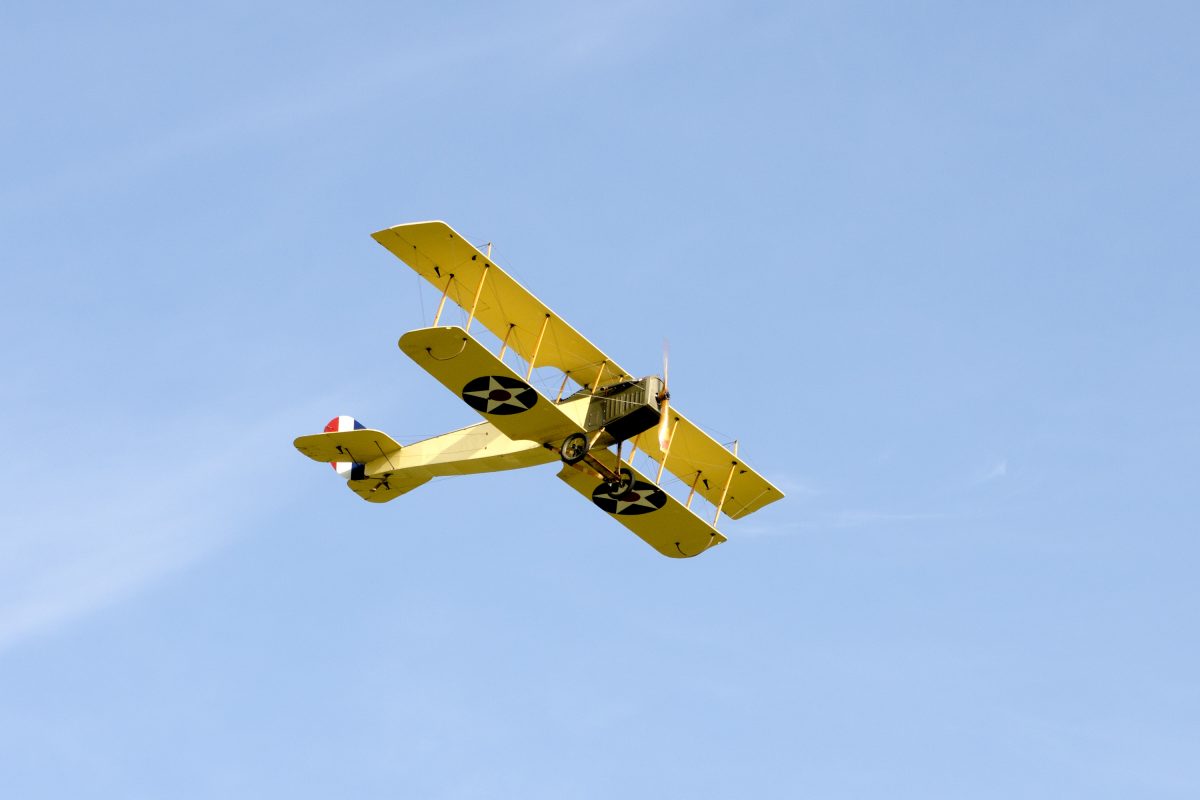
The combination of an undeveloped training program and unstable aircraft contributed to short life expectancies for WWI fighter pilots. In fact, WWI pilots had a higher chance of being killed during training than in the heroic combat dogfights we’ve seen portrayed in movies.
Yet, despite the odds, young American men volunteered in droves to become part of the Allied air fleet. Flying itself was still in its infancy, having been invented less than 15 years earlier with the historic Wright brothers’ flight in 1903. In 1917, when the U.S. entered the war, the idea of flying high above the action as opposed to a dull life in the trenches was novel and thrilling.
But German air forces were formidable, featuring the likes of Manfred von Richthofen, infamously known as the “Red Baron,” who was credited with 80 air combat kills. With an ever-increasing demand for pilots to fuel the Allied leaders’ air-fighting force, proper training for U.S. aviators was cut short.
The training process
During WWI, flight training in the U.S. primarily consisted of two stages:
Before graduating from flight training, cadets were required to be able to perform sideslips, loops, a simulated uncontrolled fall, and other aerobatic maneuvers. Although pilots were taught by instructors in dual-control planes, the instructors didn’t have much more flight time than their students. In these early days of flight, there was no quality control and little supervision.
Because the U.S. was short on aircraft, most cadets were then shipped off to Europe to complete their training with 90 hours of advanced combat readiness. All told, the young aviators in the U.S. Army Signal Corps received just 140 hours of flight training over a few months before going into combat. By contrast, it takes about two years of specialized training to become an operational fighter pilot today.
Flying WWI aircraft
In modern-day aviation, it takes years to design, test, and produce a new aircraft model. In WWI, however, new airplanes were put into action within weeks of design. The aerodynamics and “bugs” of these aircraft were worked out on the fly—that is, literally as they were flown.
Even more amazingly, some U.S. pilot trainees were even required to build their own aircraft. A letter from a 95-year old WWI aviator veteran recalled the construction of their Jennys. Here’s an excerpt:
“[All of our Jennys] were in crates and we had to uncrate and rig them. What we did rigging them would scare the pants off of me today. When the wing-fitting holes did not line up properly, we’d take a rat-tail file and line them up….My Jenny had neither a compass nor a gas gauge. The only instrument on the dashboard was an ‘on and off’ switch.”
— Captain Ira Milton Jones, President, Legal of WorldWare I Overseas Flyers
(Read more here).
Unsurprisingly, these early airplanes lacked maneuverability and stability and were subject to falling apart or engine failure without warning. Furthermore, the cockpits during this period were so small that pilots couldn’t wear parachutes.
Once in Europe, the pilots did not find the aircraft much improved. Most WWI enthusiasts are familiar with the British Sopwith Camel biplane fighter, which took down more German aircraft than any other Allied aircraft. While the Camel was highly maneuverable, its sensitivity and instability made it difficult to fly. Almost as many pilots died while training to fly the Camel as the number of men who died flying it in combat.
All in all, it’s estimated that for every 18 trained combat pilots, one died in a flying accident during WWI. Fortunately, much was learned from the experiences of the fledgling U.S. Air Corps in “The Great War” and flight training has improved rapidly in the years since. Thanks to the brave aviators who gave their lives in the early days of flight, the aviation industry was propelled forward, and safety protocols advanced tremendously.